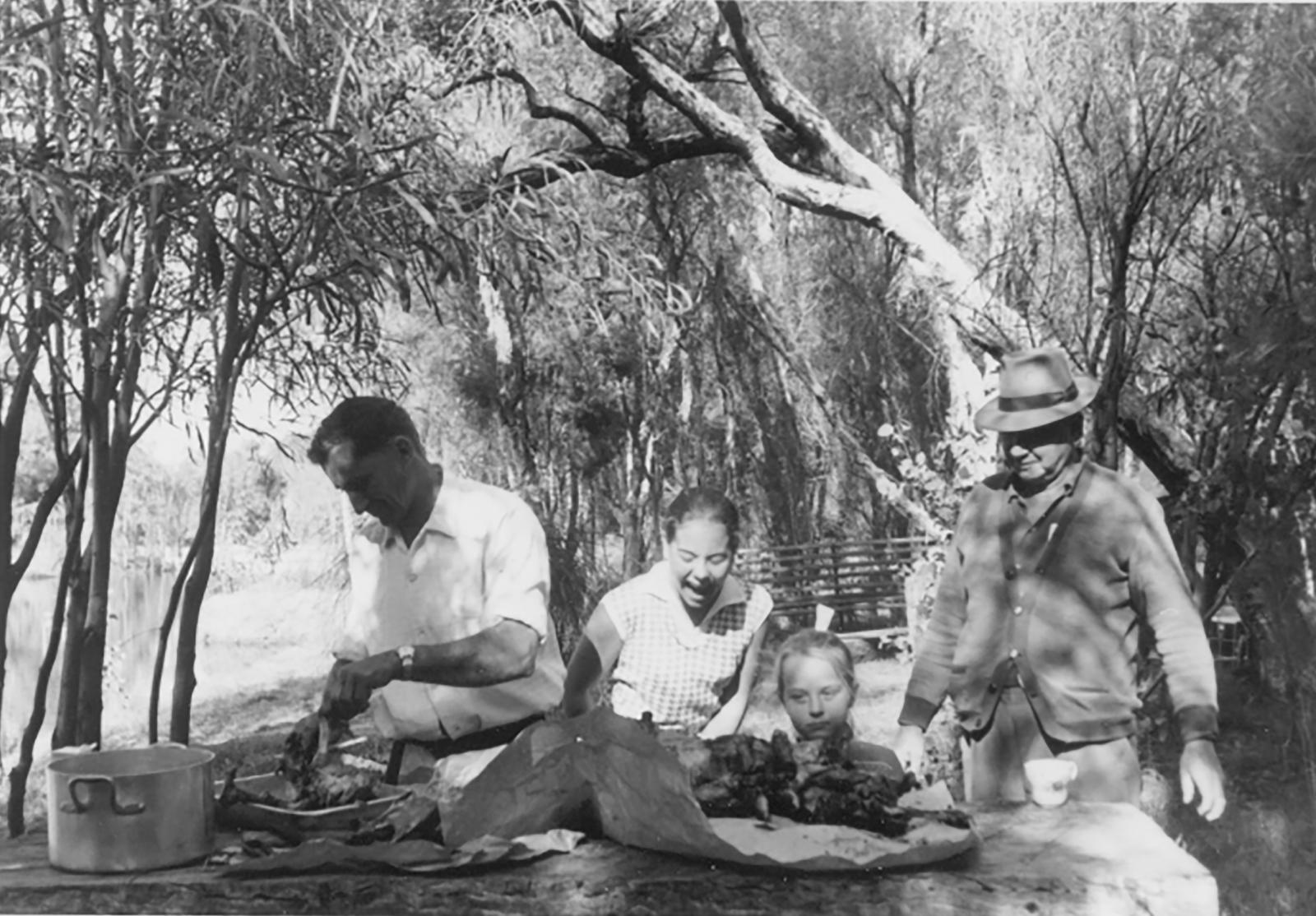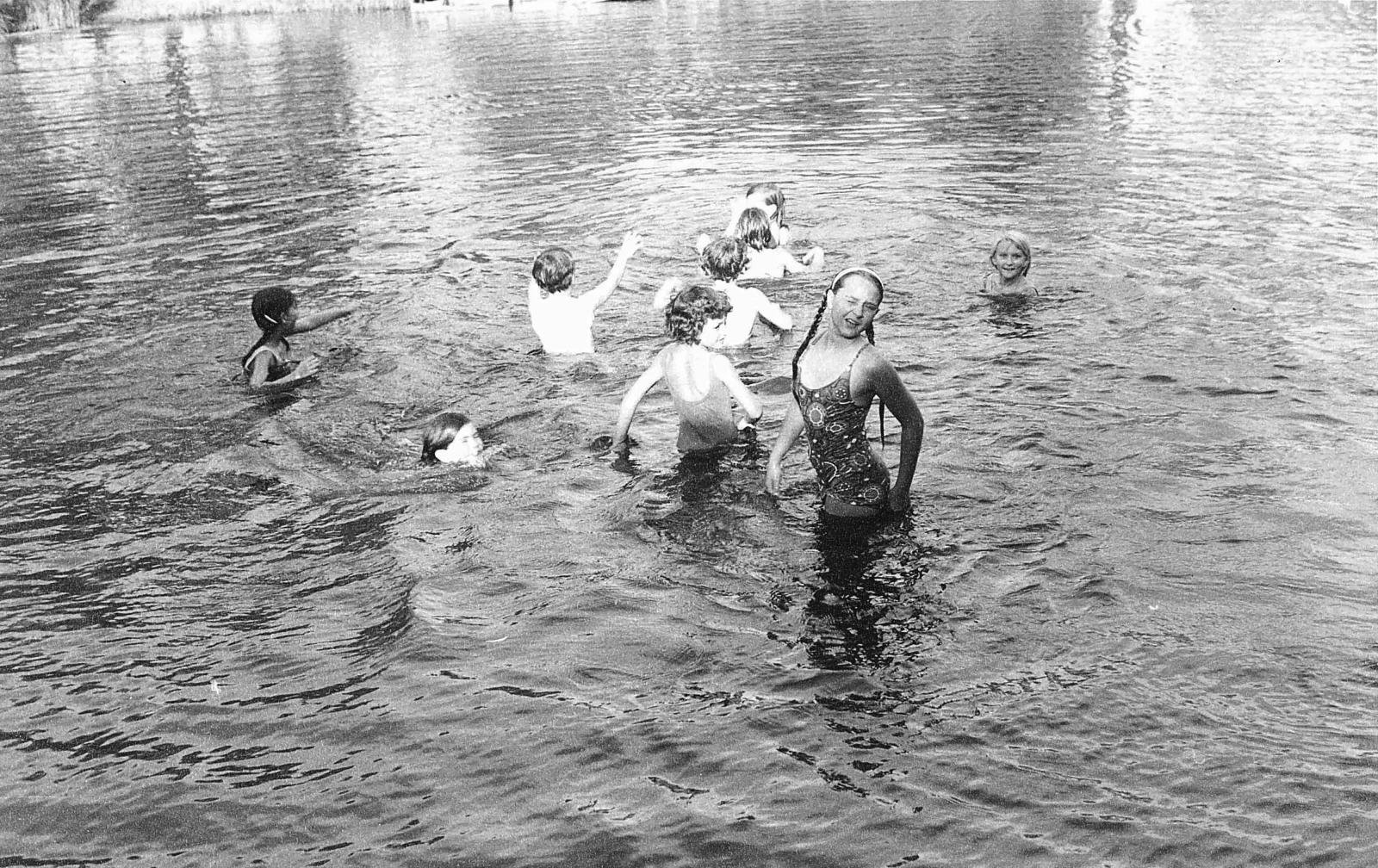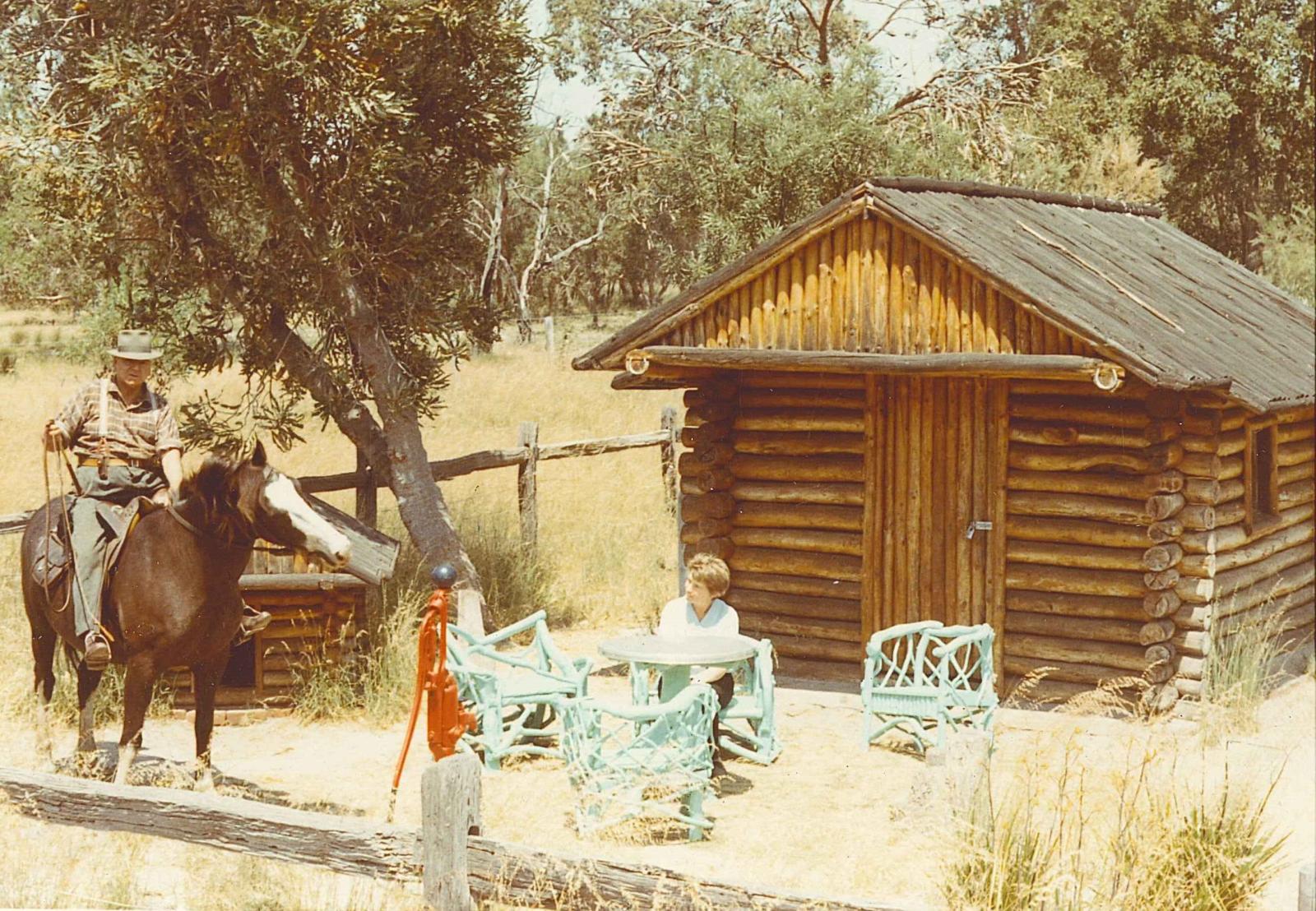Named for the freshwater mussels once prolific in the area, Mussel Pool was the passion project of Whiteman Park namesake Lew Whiteman, who developed some of his 2090 acres of land into a lush picnic ground.
Lew’s Famous Barbeques and Picnics
“…right from the start he encouraged people to use it as a picnic area and I think he provided wood and barbeques and what have you at a pretty early stage. He took pride in it as a picnic area long before it became an official picnic area.”
–Excerpt from oral history interview with John Lewis Marshall, 27 July 2000
After steadily acquiring land with money earnt from his family business, Lew Whiteman found himself the keeper of a bubbling brook flowing through acres of abundant bushland. Always a generous man, Lew set out to share this space with his friends, neighbours, and the wider inner-city community. By the 1960s, he had organised the construction of several huts, a bridge, tables, seats, toilets, and irrigation for the surrounding lawns to keep Mussel Pool looking vibrant year-round. The first large community picnic that Lew held there was a reunion of the Swan River Colony’s prominent Hadrill family on 15 November 1965, of whom Lew was a direct descendant. True to his giving nature, Lew provided four cooked sheep and hot water for tea on the occasion. Typically, a fire pit was set up away from the main picnic, near the water pump in case the fire escaped.
Below: Barbeque at Mussel Pool, c. 1960. Donated by the Gratte family.

A Prime Swimming Spot
Lew dammed and altered Mussel Pool itself in order to create a summer leisure pool for friends and neighbours. It became an extremely popular swimming and boating location in the 1960s – at the time, public pools were few and far between, and backyard pools were rare, only becoming more common in Perth after the 1962 British Empire and Commonwealth Games. With a trip to the beach often being a major expedition, and the Swan River being brackish, freshwater swimming holes were highly sought-after. Lew was known to have carted white sand into the pool at what is now called ‘Wedding Island’ to create a sandy bottomed swimming spot.
However, in damming the watercourse, Lew inadvertently prevented the seasonal migration of small fish species from downstream, resulting in the upper reaches of the Bennett Brook becoming devoid of fish life. This led to the construction of a fish ladder to reconnect Bennett Brook and Mussel Pool in 1999. The first of its kind in Australia, the fish ladder was designed by Murdoch University zoologist and built by a ‘Work for the Dole’ team. The structure allows native fish, including the Western minnow and Westralian pygmy-perch, to migrate upstream to Mussel Pool and the upper reaches to the Bennett Brook. The result has been the re-colonisation of this wetland area by several native fish species – a great achievement for conservation.
Below: Swimming in Mussel Pool, 1968-9. Donated by the Gratte family.

Lew’s Outdoor Collection
“Mussel Pool – it was always for the people of Western Australia and somewhere they could take the children … there would be lawns, no fences, and horses and carts and things like that from the past…”
–Excerpt from oral history interview with Clive Edgar Rutty, 7 May 2002
Many of the larger objects from Lew’s expansive collection were once scattered around Mussel Pool, where children in particular were encouraged to climb and play upon wagons, carts, whims whilst learning a little bit about our transport history in the process! The majority of these objects are now kept safe in Revolutions’ climate-controlled exhibition and collection space.
Lew also enlisted the help of local brick-worker Wally De Burgh and others to build a number of log structures around Mussel Pool in the 1960s. These structures included cabins, benches, seats, a bridge, and toilets – with many still standing to this day. We refer to this ‘park architecture’ as ‘parkitecture’, as the style seeks to blend amenities into the surrounding landscape rather than imposing on them.
Below: Time spent at a stockman’s hut, 1969-70. Donated by the Warman family.
